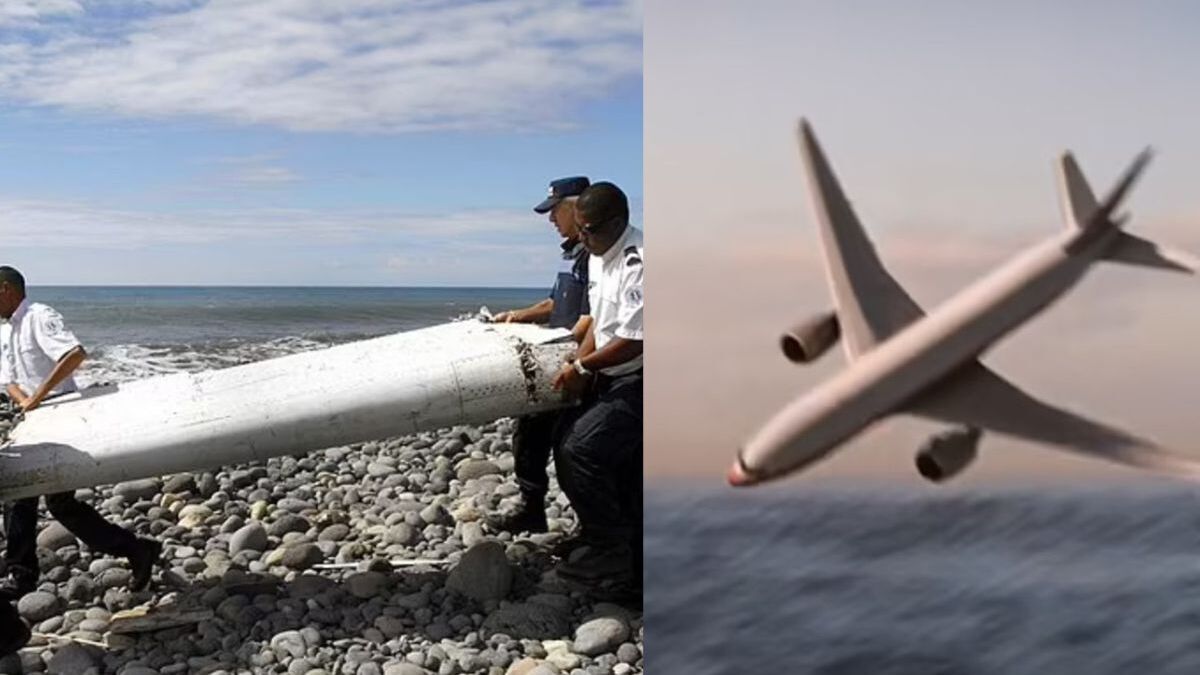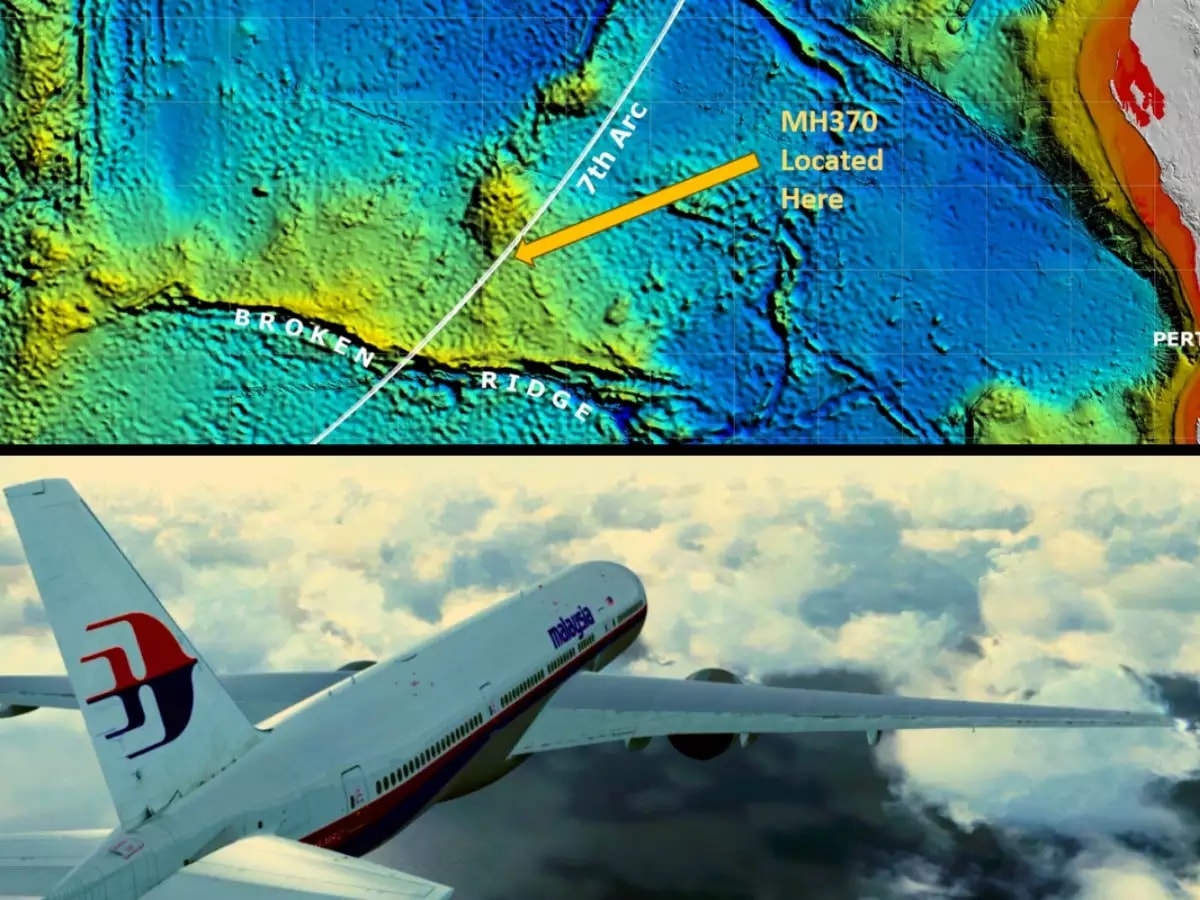MH370 Mystery: After 11 Years, Underwater Drone Reveals New Evidence
The Disappearance That Stunned the World
It has been over a decade since Malaysia Airlines Flight MH370 vanished into the night sky — a disappearance that became one of the most haunting puzzles in aviation history. On March 8, 2014, the Boeing 777 departed Kuala Lumpur for Beijing with 239 people on board. Less than an hour later, its transponder went dark.

At first, air traffic controllers assumed it was a routine signal glitch. But when military radar showed the aircraft turning sharply west, flying back across the Malay Peninsula and into the vast Indian Ocean without radio contact, hope gave way to confusion.
For over six hours, MH370 continued on an inexplicable route before vanishing entirely from radar screens at 8:19 a.m. That was the last trace of the plane — and the beginning of a mystery that would consume investigators, families, and governments around the world.
The Search That Changed Modern Aviation

In the months following the disappearance, rescue teams from 26 nations joined the search. The early focus on the South China Sea proved fruitless, and soon satellite data redirected efforts to the southern Indian Ocean — one of the most remote, turbulent, and least explored regions on Earth.
Between 2014 and 2017, specialized ships swept an area of over 4.5 million square kilometers, deploying sonar, drones, and deep-sea sensors. Volunteers around the globe scoured satellite imagery for any sign of debris. Yet despite the scale of the effort — costing more than $150 million — the results were devastatingly sparse.
No black boxes. No fuselage. Only fragments: a flaperon from a Boeing 777 found on Réunion Island in 2015, followed by scattered debris washing up on beaches in Madagascar, Mozambique, and Tanzania. Each piece offered a clue, yet none revealed the complete story.
The Ocean’s Reluctant Secrets

As time passed, the Indian Ocean seemed to swallow the truth. Scientists used drift pattern modeling to trace the debris back to a likely impact zone, forming what came to be known as the 7th Arc — a narrow stretch of sea thousands of kilometers west of Australia.
Still, the wreckage remained elusive. The seabed there plunges to depths exceeding 6,000 meters, riddled with trenches, volcanic ridges, and unpredictable currents — a place as hostile as outer space.
The Return of the Search
In 2018, private firm Ocean Infinity took up the search, deploying autonomous underwater vehicles (AUVs) capable of scanning the ocean floor independently. The mission covered vast areas faster and deeper than previous expeditions but returned empty-handed.
Undeterred, the company refined its approach, investing in a next-generation fleet — the Armada 7806, designed to operate with artificial intelligence and near-real-time mapping capabilities.
By early 2024, Ocean Infinity announced a renewed mission, combining AUV data with cutting-edge analysis from aerospace engineer Richard Godfrey, whose research introduced a new dimension to the mystery.
Tracking MH370 with Invisible Signals

Godfrey’s method, called WSPR (Weak Signal Propagation Reporter), used faint global radio waves that had been subtly disturbed by the passing aircraft. By triangulating these disruptions, his team charted what they believed to be MH370’s final flight path — leading to an unsearched area near the Seahorse Zone, just beyond the original search perimeter.
The combination of WSPR data, AI-assisted current modeling, and the new Ocean Infinity drones created the most targeted and technologically advanced search strategy yet.
The Discovery in the Deep
In May 2025, Ocean Infinity’s latest expedition sent shockwaves through the aviation community. One of the underwater drones returned sonar readings showing a long, flat structure partially buried beneath sediment at a depth of nearly 5,800 meters.
Further passes revealed rib-like patterns consistent with aircraft wing architecture, specifically that of a Boeing 777. Within a 15-kilometer radius, the drones detected two more anomalies — one resembling a vertical stabilizer (tail section) and another showing a cylindrical cavity possibly matching the fuselage cross-section.
While visual confirmation remains pending, early analysis suggests the wreckage lies precisely along the flight path predicted by the WSPR model, strengthening the case that this is indeed Flight MH370.
The Long Road to Verification
Experts caution that confirmation will require high-definition imaging and material testing to match structural alloys and paint layers with Malaysia Airlines’ manufacturing records.
Recovery operations pose immense challenges. The depth, pressure, and sediment density make physical retrieval difficult and dangerous. Engineers are now developing specialized robotic arms designed to lift key components — most importantly, the flight data recorders (black boxes), which could still hold valuable information if preserved in cold, oxygen-poor conditions.
If retrieved, these recorders may finally answer the two questions that have tormented the world for 11 years:
- Why did MH370 divert from its planned route?
- What happened inside the cockpit during its final hours?
Hope and Heartbreak for Families
For the families of the 239 passengers and crew, this new discovery is bittersweet — a flicker of hope tempered by years of grief and unanswered calls for accountability.
“Closure isn’t the right word,” said one family member. “But knowing where they are — that matters.”
Governments in Malaysia, Australia, and China have reportedly begun reviewing the new sonar data, and discussions are underway to authorize a full recovery mission by the end of the year.
The Mystery Nears Its End
While skeptics urge caution until official verification is complete, the discovery marks the strongest lead since 2015. For the first time, the ocean has given back more than fragments — it has offered direction.
If confirmed, the site could not only end one of the most painful chapters in modern aviation but also reshape how the world approaches deep-sea disaster recovery.
For now, the Indian Ocean holds its breath once more — as machines hum in the darkness, scanning for answers buried under eleven years of silence.
The mystery of MH370 may finally be nearing its final chapter — not with conspiracy or speculation, but with science, patience, and the relentless pursuit of truth.
Sources:
Reuters – “New Sonar Data Points to Possible MH370 Wreckage”
BBC News – “The Continuing Search for Flight MH370”
The Guardian – “Ocean Infinity’s Renewed Deep-Sea Mission”
Australian Transport Safety Bureau – “MH370 Investigation Updates”
CNN – “Families React to New MH370 Discoveries”
